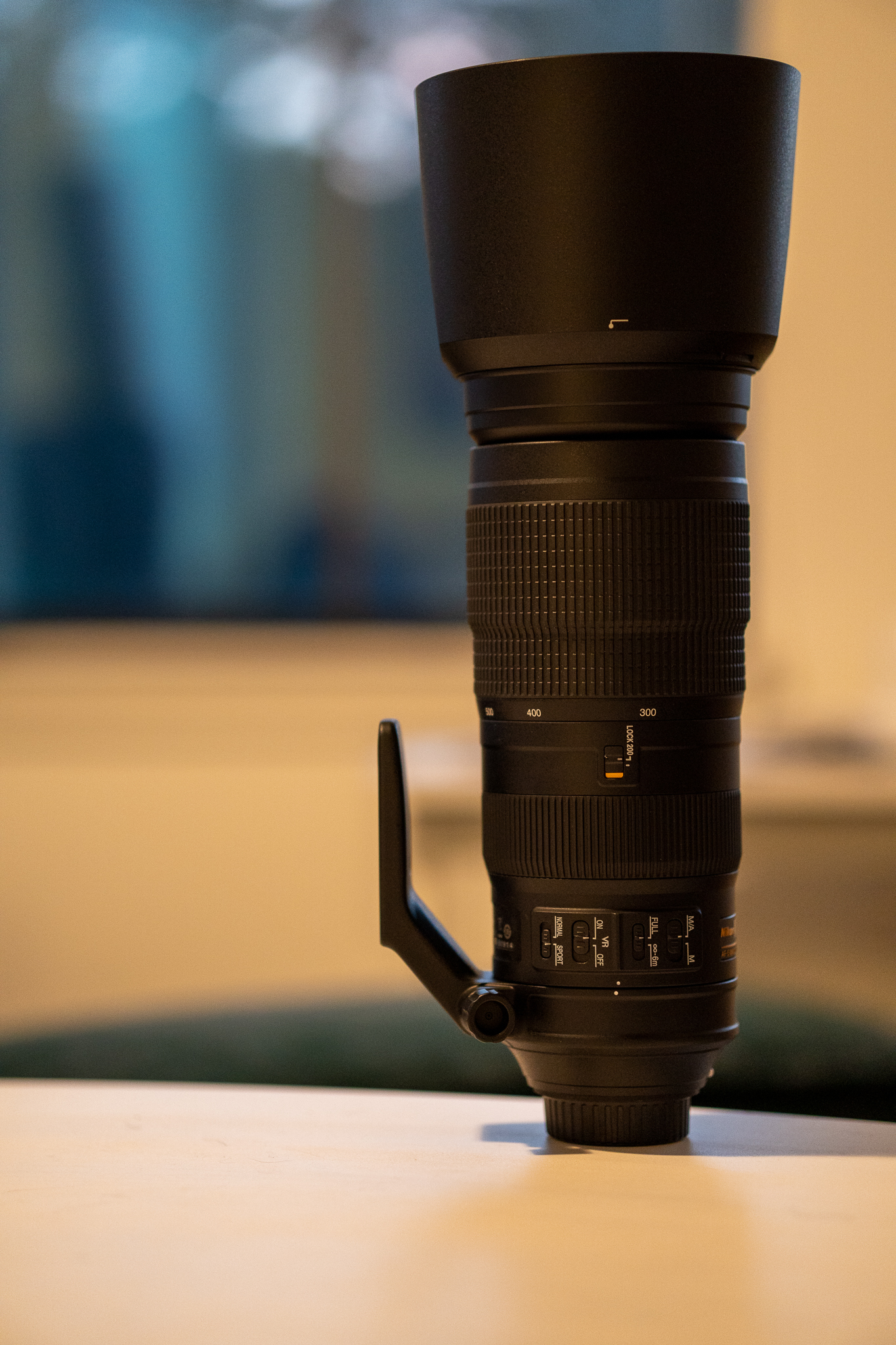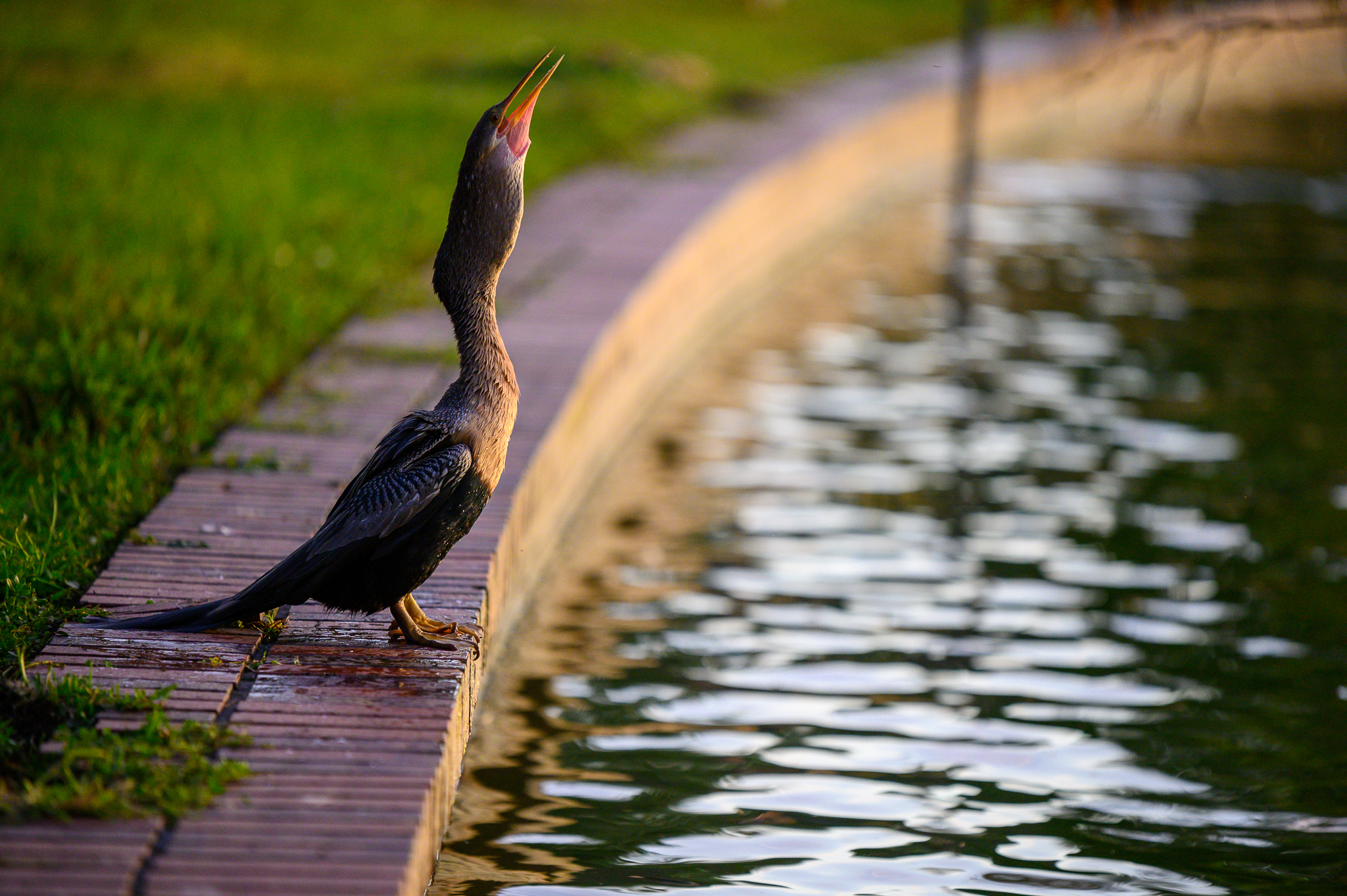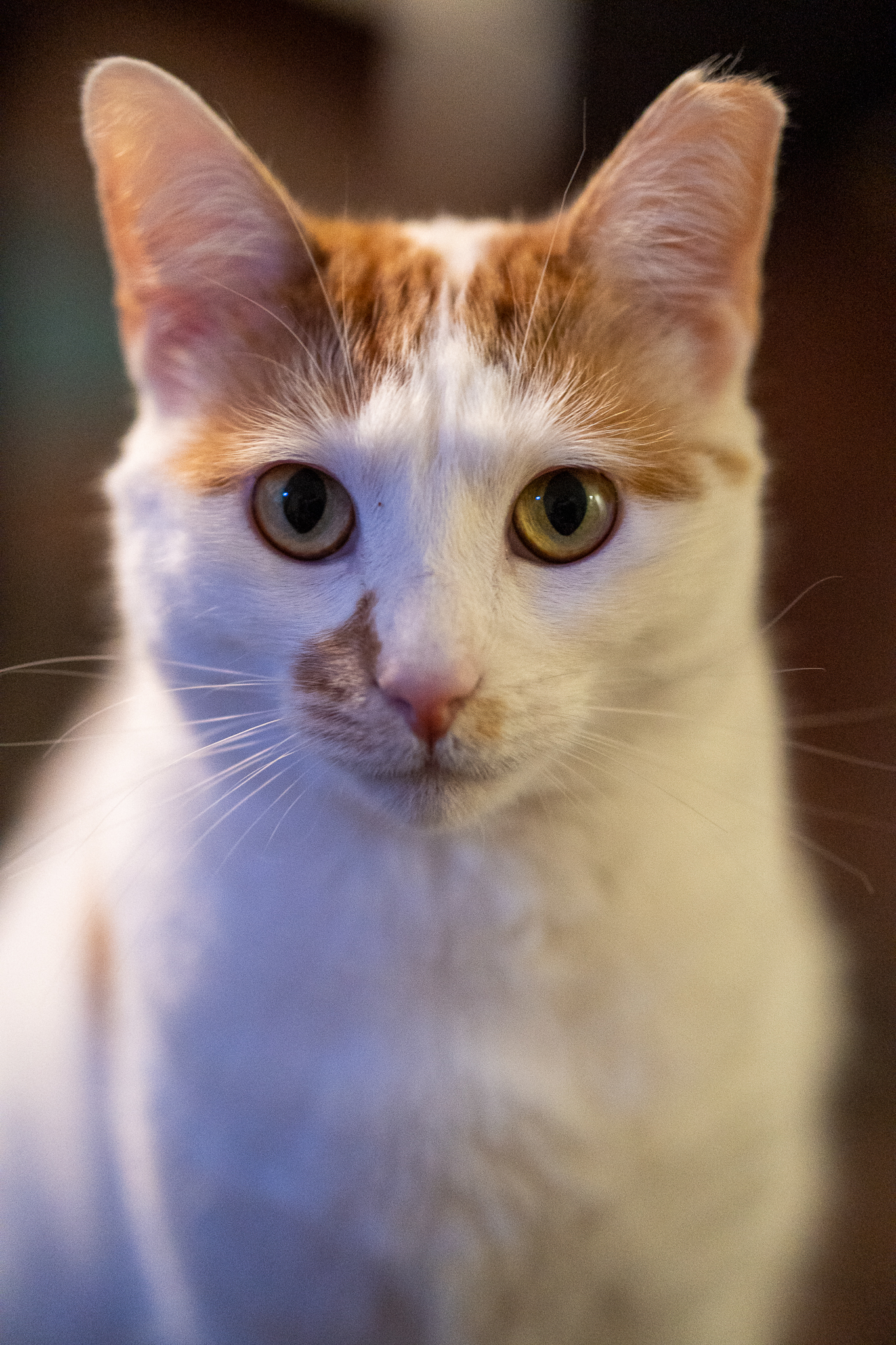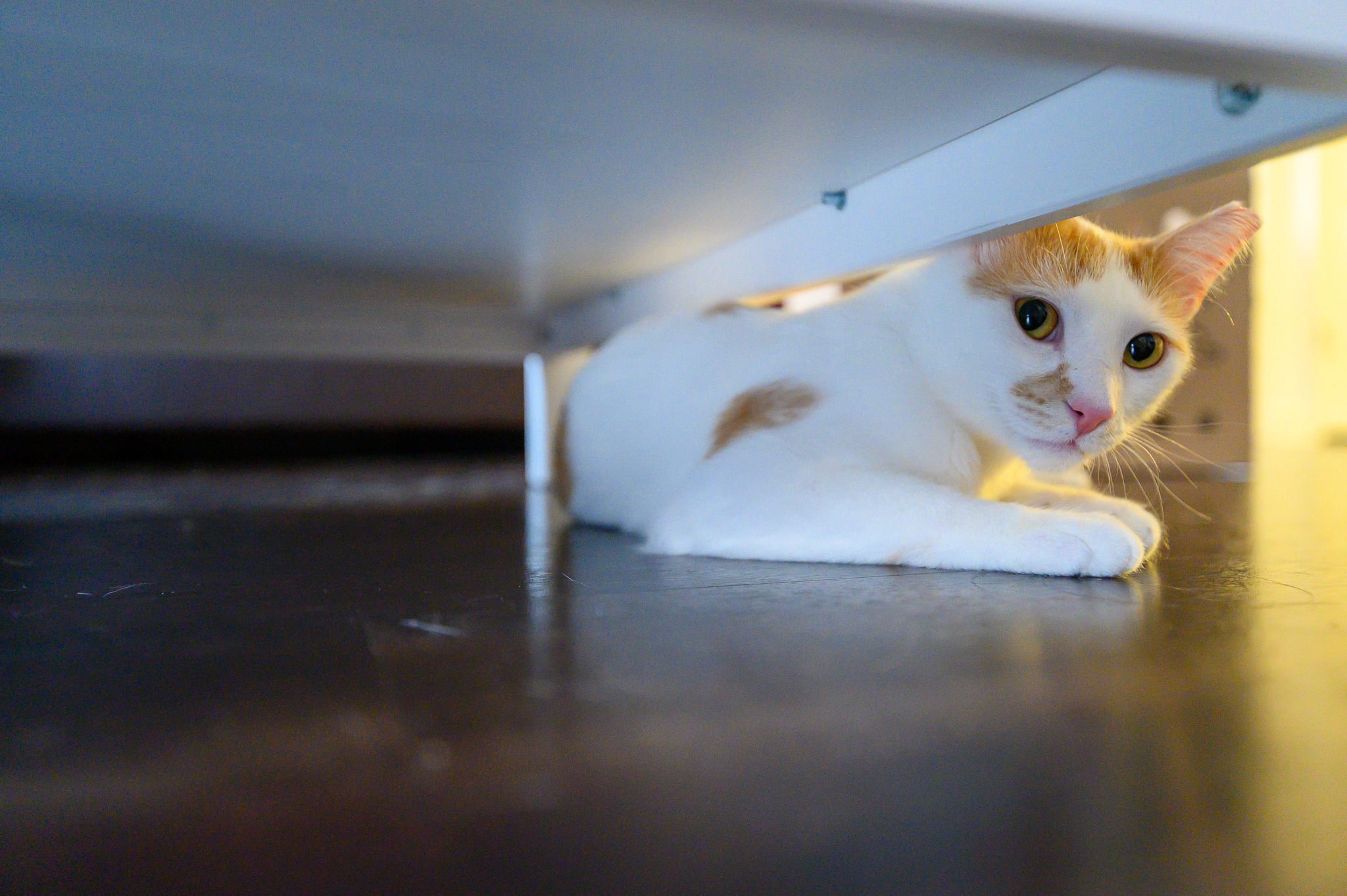In Appreciation of APS-C
June 02, 2020
I love my big camera lenses.
They’re usually well-built and fast but come with both a physical and financial cost. Financially, expect to spend well over $1000 to acquire them. You might also find the added cost of ownership in visiting the doctor for a sore back.
Here’s a Nikon 200–500mm f5.6, which weighs in at approximately 5 pounds by itself:

Despite the weight, it’s fun to shoot with - the images are crisp, and the autofocus is surprisingly good for a lens of this type. It’s perfect for taking out on a birding adventure or to a wildlife refuge:


And if you don’t need that kind of length, a 70–200mm f2.8 gets awesome results, too, and feels light as a feather (3.3 pounds) in comparison:

On the other end, take my Tamron 15–30mm f2.8, weighing about half the Nikon does, at 2.45 pounds. Still a hefty boy, but manageable. It slots nicely into the trinity of lenses most professionals will carry (traditionally a 14–24mm, 24–70mm, and 70–200mm, all at f2.8) to cover all situations. Tamron makes all three of these for Canon and Nikon and has similar lenses for Sony. In my experience, they are all excellent.
It’s great for landscapes and making tight spaces look big. The f2.8 aperture makes it useable in most low light scenarios, but not a great lens to do things like astrophotography.
These lenses cover two extremes in photography. They’re heavy and expensive because they are meant to last, and have the optics to support a variety of shooting scenarios.
They’re also full-frame lenses. Both of these lenses are for the Nikon F-mount, and the cameras they go with match their heft and quality.
There has been a recent shift, though, to make full-frame more accessible in terms of price and practicality. For example, Nikon released its first full-frame mirrorless camera body, the Z6, in November of 2018. It’s smaller and lighter than comparable full-frame bodies with a slew of useful upgrades.
The Z6’s weight is right at 1.5 pounds, while the recently released D850 comes in at just over 2 pounds. That extra .5 pounds might not sound like a huge difference, but when lugging it around on your shoulder for hours, you can start to feel it. If you go for the smaller, plastic-y lenses, you’ll be sacrificing quality, speed, and durability. Their resale value, too, won’t come close to what a fast f2.8 professional lens can fish after several years.
While I’ve invested in a full-frame system over the past couple of years, I’ve had a nagging desire to get something smaller and lightweight.
There are two big reasons for this:
-
It’s less conspicuous. People pay attention to people carrying large camera systems - sometimes not in the way I’d want.
-
It’s easier to grab and go. I don’t have to plan around how I will carry a camera.
After a ton of research and a lot of waffling, I recently got a great deal on Sony A6600 with an 18–135mm kit lens, thanks to a student discount combined with a sale. The A6600 is an APS-C sized camera that weighs in at just 1.11 pounds and comes in a very manageable compact size.
You might be wondering why I chose to go with Sony when I already have so much invested in the Nikon system. I also considered two other cameras that compete in this same price range: the Nikon Z50 and the Fujifilm X-T3.
Neither of these cameras had in-body image stabilization compared to the A6600, which does.
The Z50 got excellent reviews for image quality and usability. The biggest con, though, was that it only launched with two APS-C lenses. While they were high performing lenses, if I were going to expand past them, I would be buying full-frame lenses or using the ones I already had. This kind of defeated the purpose of a small body system.
The Fuji is a sharp-looking camera that I know would have inspired me just by looking at it. Ultimately, though, the higher price compared to what I eventually paid for the A6600 (under $1000 for body and kit lens versus $1200 for just the X-T3 body) turned me off. There were too many compromises for the price. The X-T4, which was announced right around the time I was looking to purchase, would have checked all the boxes for me. Unfortunately, it was nearly $1000 more to buy with a lens.
So, I chose the A6600 for its lack of significant compromises. It also helped that my girlfriend has an A7 III, and some excellent lenses I could bum off her if needed. For reference, this isn’t my first rodeo with APS-C. I began shooting regularly over a decade ago with a Nikon’s crop sensor D60 that I got as a graduation present. After getting some serious work shooting for my local newspaper, I quickly upgraded to another crop sensor camera, the Nikon D90. Both of these we great cameras - especially the D90. I didn’t replace the D90 until I bought the Z6 last spring.
The crop sensor format was great for a broke college student. It was a cheap system, with a quality set of glass costing me less than $1000. It was also compatible with the gear the real professionals were using, so I got to experiment a lot. I loved it, and it was what got me into photography in the first place. I recently sold that f2.8 glass I used with the D90 to Adorama and got nearly $500. That’s only a 50% depreciation for non-professional but still fast glass after ten years!
I love my A6600. It’s the camera I will choose to take out on walks in the park or to family events. The quality is excellent, and it’s packed with a ton of neat features - all in a package I’m not afraid to throw on a wrist strap.
Does the quality match my much more expensive Z6? No. But I don’t expect or need it to do those things. It’s a vast improvement over an iPhone without being intrusive. What makes it shine, though, is a trio of primes that Sigma has put out for the APS-C format. All at f1.4 (f2.0 in full-frame), they’ve released a 16mm (24mm in full-frame), 30mm (55mm in full-frame), and 56mm (~85mm in full-frame). These lenses slap - they’re all super fast to focus and let in a ton of light.
While my kit lens is a decent overall performer - especially for the price - there is something about these primes that is special. The contrast is excellent, and the bokeh is beautiful. The range makes it super versatile - from landscapes with the 16mm to portraits with the 56mm - and there is a look they produce that I can’t put my finger on.
If you regularly shoot with primes, you know the look. There’s a certain level of crispness and intimacy that showcases your subject:

And, to make things even sweeter, they’re cheap. You can get the whole set for between $900-$1000. For now, I think these lenses are all I will want or need for my A6600, so to get a complete set of quality lenses at that price is an absolute steal. To get an even better deal on them, bid on Greentoe as I did. Depending on your luck, you might save a couple of hundred dollars.
Now, I know many detractors will say that APS-C isn’t worth it. They’ll say the image quality isn’t there, or the depth of field and low light performance isn’t good enough. I don’t think any of these things are true for my use case.
Of course, you have to know what you’re getting into when you buy into a system like this. The Sigma lenses are well-built, but I can feel a quality difference between them and my higher-end Nikon glass. I wouldn’t trust either the body or the lenses to survive a light rain shower. And yeah, because the sensor is smaller, you don’t get as much light to play with in your images.
But, I’m willing to trade those things to recapture the love of photography. Just go out and shoot - don’t think about carrying around all of this fancy equipment, get the picture with what you have.
There’s a time a place for those things. I wouldn’t take my A6600 out birding, for example (I have the chonker mentioned above for that). But I think the size and weight are perfect for anyone who is just walking through the park or that wants to get some good quality photos of their nephew at a family picnic.
Whatever camera you use, just make sure you have good subjects:
